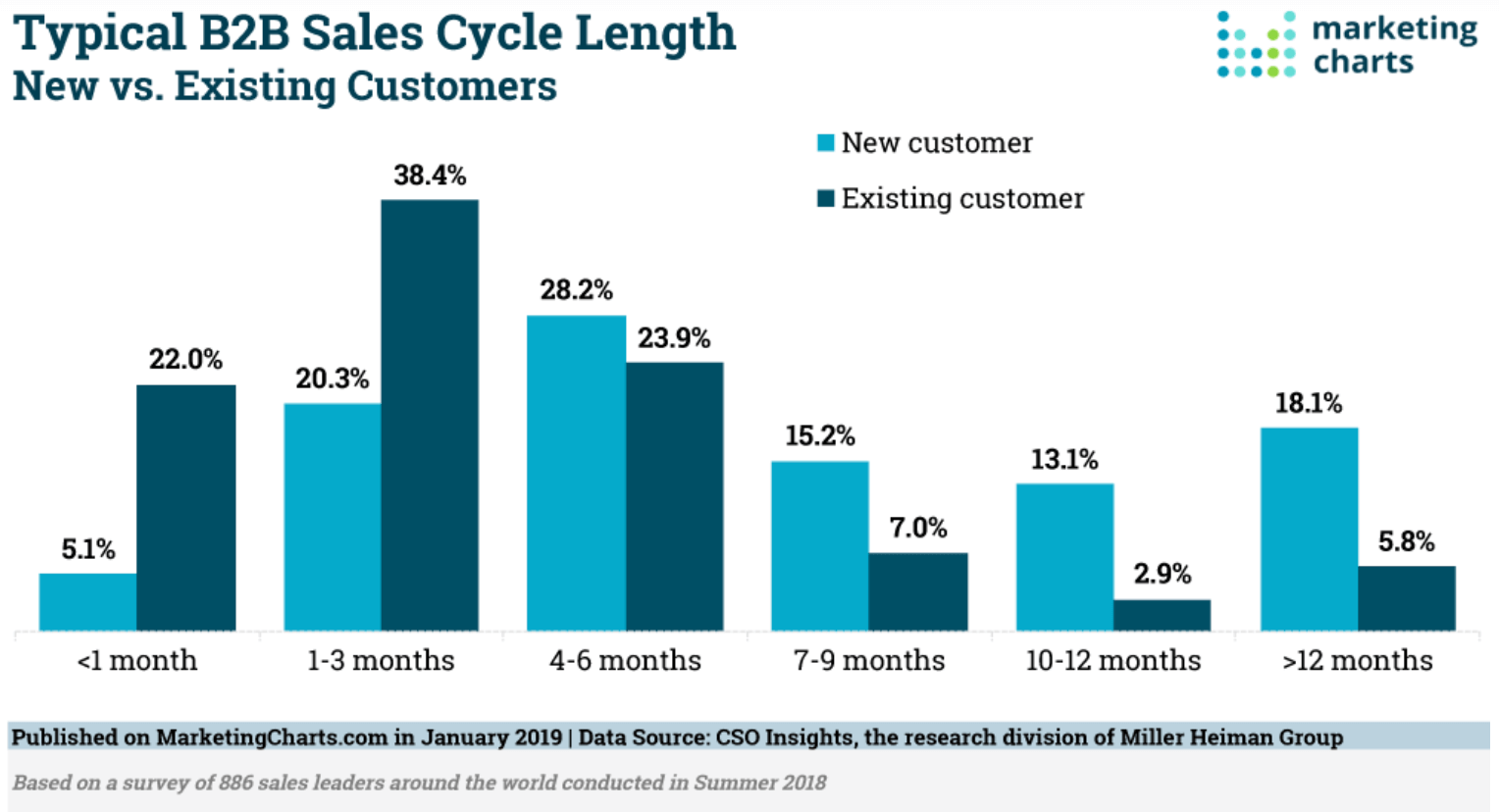Understanding the sales cycle length is crucial for effectively managing your sales pipeline and maximizing your chances of success. It’s essential to identify and nurture qualified leads, while also optimizing the time it takes for a prospect to become a customer.
By grasping the definition and calculation of sales cycle length, you can gain valuable insights into your sales process, allocate resources efficiently, and ultimately achieve your sales targets. Let’s dive into the world of sales cycles and explore how this metric can drive your sales success.

What is Sales Cycle Length?
Sales cycle length refers to the amount of time it takes for a potential customer to move through the sales process, from the initial contact with a business to the final purchase decision. It is a crucial metric in both B2B (business-to-business) and B2C (business-to-consumer) sales, as it directly impacts the efficiency of a sales team.
It’s important to note that B2B and B2C sales cycle lengths differ. In B2B sales, the sales cycle length tends to be longer compared to B2C sales. This is primarily due to the complexity of B2B transactions, involving multiple decision-makers, longer evaluation periods, and higher purchase values.
B2B sales cycles often involve multiple stages, such as lead generation, prospecting, needs analysis, proposal, negotiation, and closing. These stages require time and effort to build relationships, address customer concerns, and navigate organizational processes.
On the other hand, B2C sales cycles are typically shorter and more transactional. B2C customers often make purchase decisions based on immediate needs or wants, and the decision-making process is usually more straightforward. However, this can vary depending on the complexity and cost of the product or service being sold.
What is the Average B2B Sales Cycle Length?
Average sales cycle length can vary significantly depending on the industry, target market, and individual sales strategies. Some sales cycles may last a few days or weeks, while others can extend over several months or even years.
Understanding and tracking the average sales cycle length is important for sales teams to effectively allocate resources, forecast revenue, and optimize their sales processes.
As mentioned above, B2B sales generally has a longer sales cycle is usually longer as compared to B2C sales. This is because businesses usually have several layers of decision-makers (C-level, managers, end users, etc.) to get through before making a final purchase decision.
According to data from CSO Insights, most B2B deals (74.6%) close within 4 months. The average length of the sales cycle also depends on the complexity of the product, and the average deal size. Larger deals tend to take longer to negotiate and close.

Sales cycle metrics are important sales KPIs, essential for evaluating the efficiency and effectiveness of a sales team. Besides sales cycle length, other metrics may include the average time spent in each stage of the sales process, the lead to customer conversion rate, the number of touch points required to close a deal, and the overall win rate.
By monitoring these metrics, businesses can identify bottlenecks, optimize their sales strategies, and make data-driven decisions to improve their sales cycle length.
How to Calculate Sales Cycle Length
To calculate the sales cycle length, you need to track the time it takes for a prospect to move through each stage of the sales process until they make a purchase. Here’s a step-by-step guide to calculating the sales cycle length:
- Define the stages: Identify the stages involved in your sales process, from initial contact with a prospect to closing the deal. This may include stages like lead generation, qualification, presentation, negotiation, and closing.
- Track the timeline: Start tracking the time (ie, number of days, weeks, or months) it takes for each prospect to progress from one stage to the next. Record the date when a prospect enters each stage and the date when they move to the next stage or make a purchase.
- Calculate the duration: For each prospect, subtract the entry date of a stage from the exit date of the previous stage. This will give you the duration (in days, weeks, or months) the prospect spent in each stage.
- Average the durations: Once you have collected the durations for multiple prospects, calculate the average time spent in each stage. Add up the durations for a specific stage and divide it by the number of prospects or opportunities.
- Sum up the stages: Add the average durations for each stage to determine the total sales cycle length. This will give you an overall average time it takes for a prospect to move through the entire sales process.
By consistently tracking and analyzing these durations over a period of time, you can gain insights into the average length of your sales cycle and identify areas for improvement. This data can help you optimize your sales strategies, allocate resources effectively, and forecast future sales performance.

